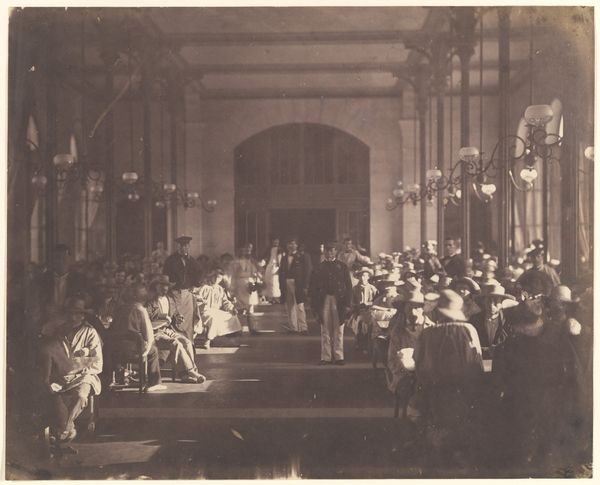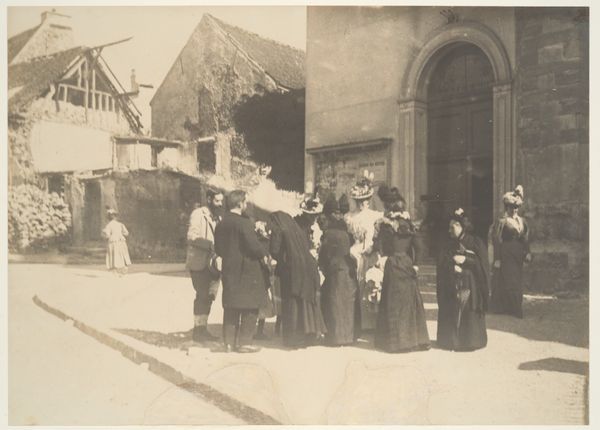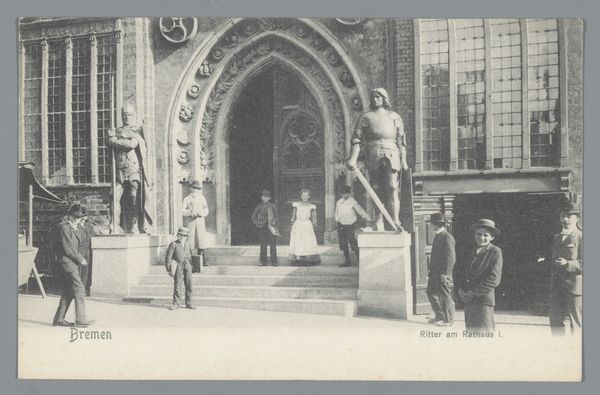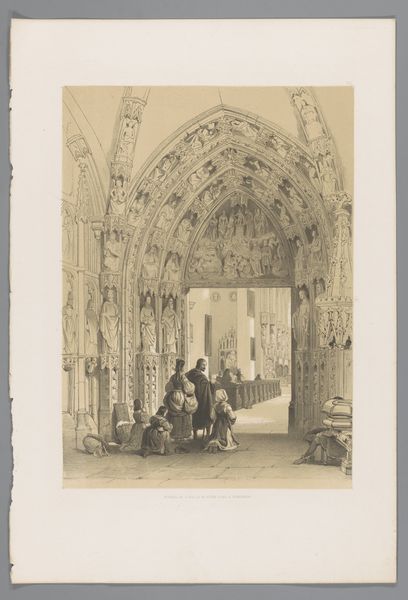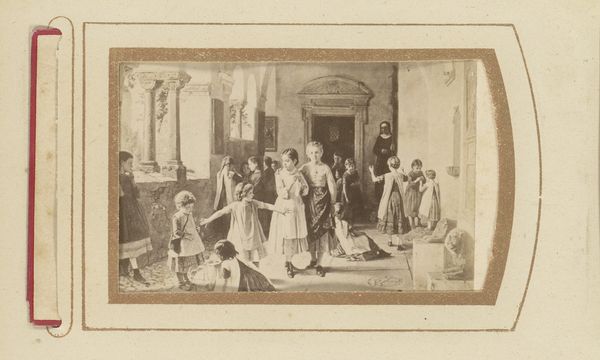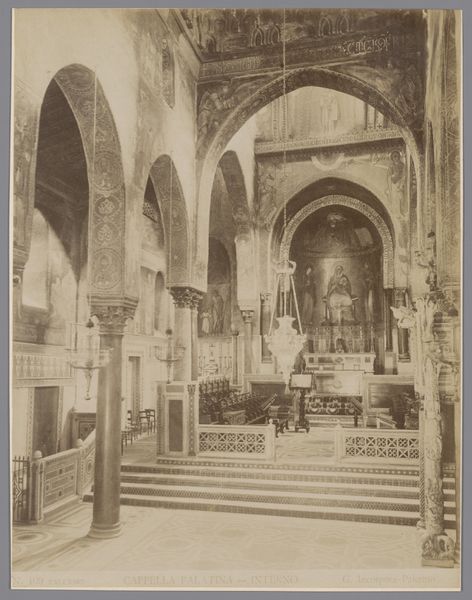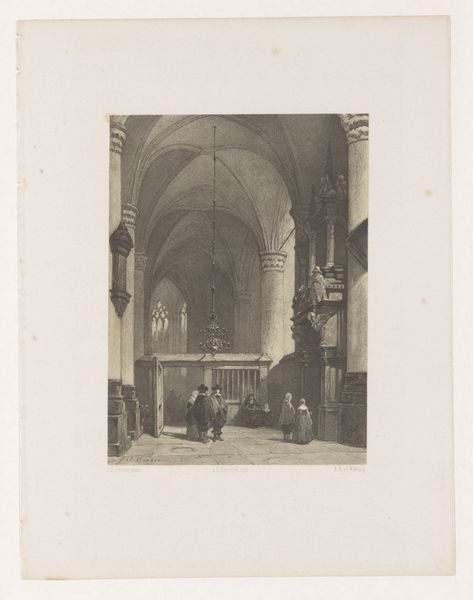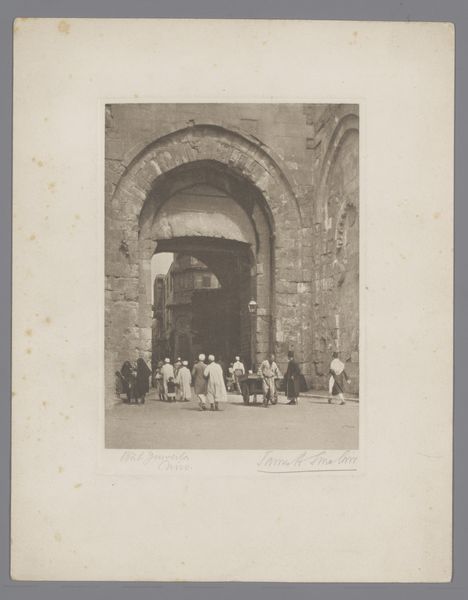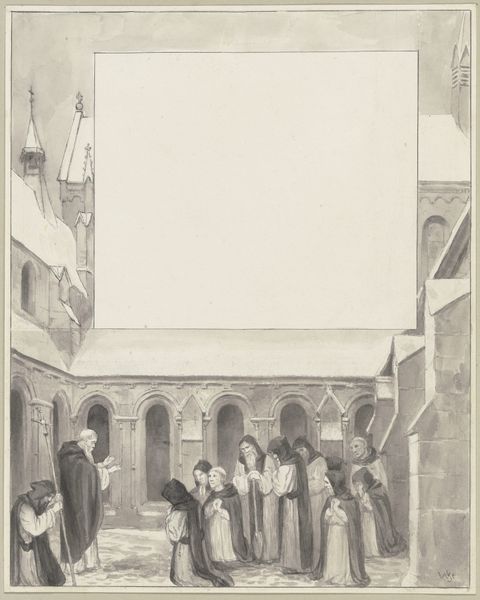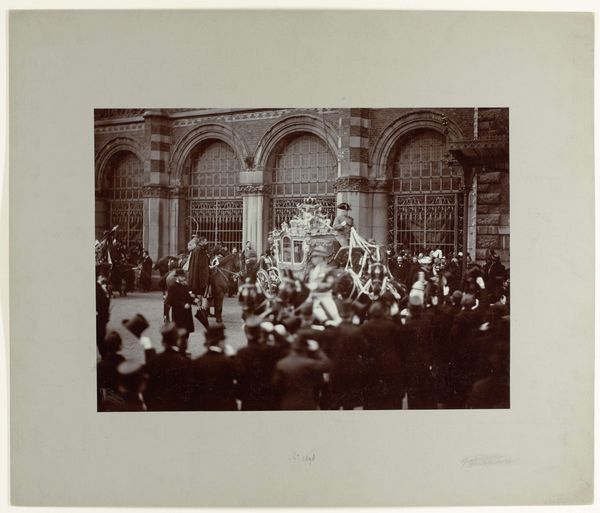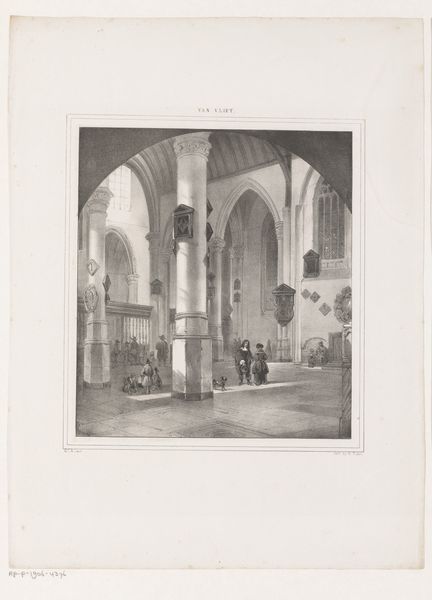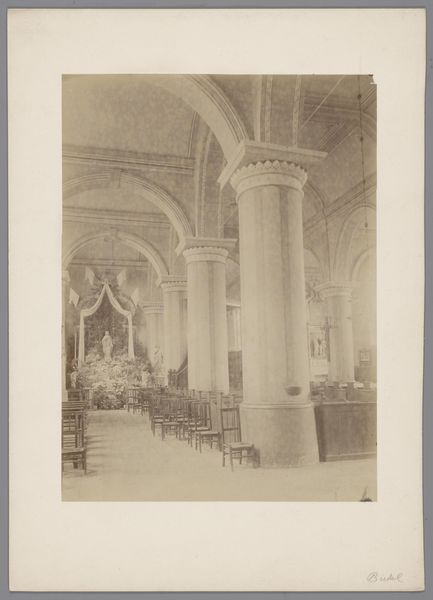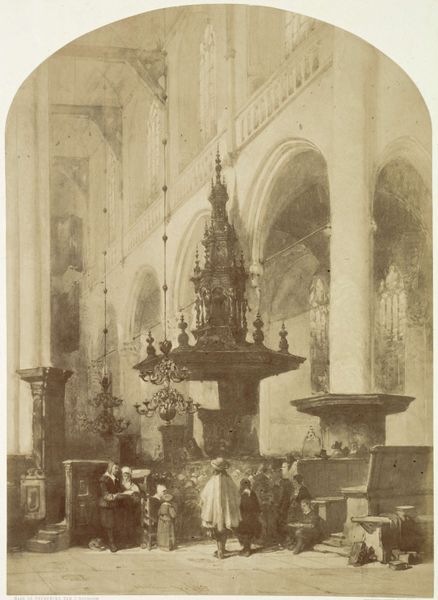
drawing, print, paper, pencil, chalk, black-chalk
#
drawing
# print
#
landscape
#
paper
#
pencil
#
chalk
#
france
#
19th century
#
genre-painting
#
academic-art
#
black-chalk
Dimensions: 565 × 412 mm
Copyright: Public Domain
Editor: So, this is Lhermitte’s "The Lectern," made in 1871. It's a drawing using pencil and black chalk on paper, depicting what looks like a choir rehearsal inside a church. It feels very somber, almost monastic. What strikes you about it? Curator: It's compelling to consider the means of production that go into this seemingly simple image. Lhermitte carefully selected paper—likely industrially produced at this point—chalk and pencil, and used them to render a scene that reflects the labor of the clergy and the choir boys. Think about the social context: what power dynamics are at play here? Editor: You mean like the clear hierarchy shown, with the robed figures towering over the children? Curator: Exactly. And how is this hierarchy reinforced through the *materials* used to create this image? The very act of drawing with chalk and pencil, both relatively accessible and reproducible mediums, brings an almost documentary feel. It suggests a focus not on some divine inspiration, but on a record of this particular setting, these people doing this very specific labor. Does it challenge your perception of 'high art'? Editor: I see your point! Thinking about chalk and pencil being common materials, it really shifts the focus. I usually think of drawings as studies for more ‘important’ works, but here it's like the process itself is the point. It brings it down to earth, and I guess, humanizes the scene. Curator: Precisely! It moves us away from traditional notions of art as divinely inspired towards thinking about the *making* of the art object and how those processes shape the viewer's perception. How does this way of thinking change what you previously thought about art? Editor: I guess, I didn't really consider art making as being about *work* before. This has given me a totally different lens for appreciating not just this drawing, but art in general. Curator: Indeed! Now we’re thinking critically. Materiality isn’t just about *what* an artwork is made of, but *how* and *why* that material was chosen.
Comments
No comments
Be the first to comment and join the conversation on the ultimate creative platform.
